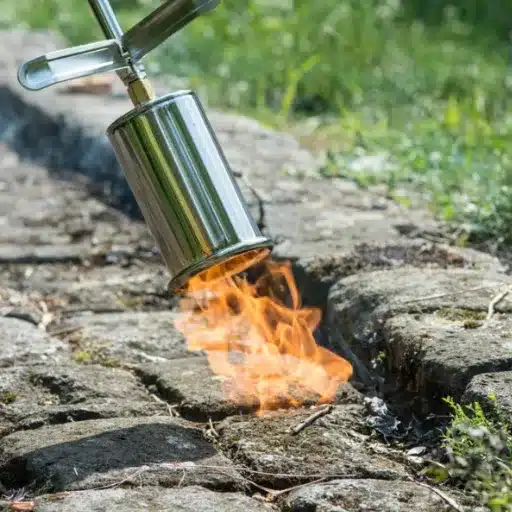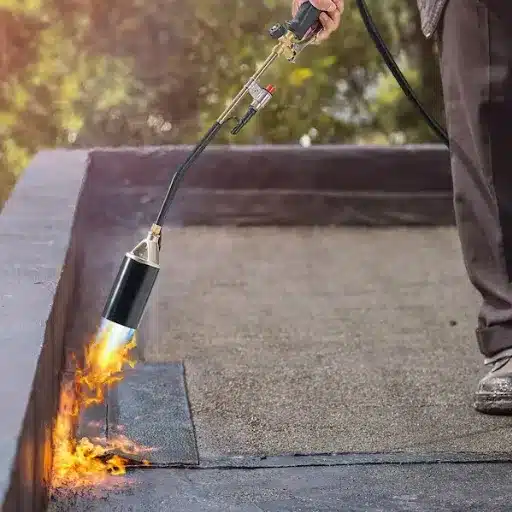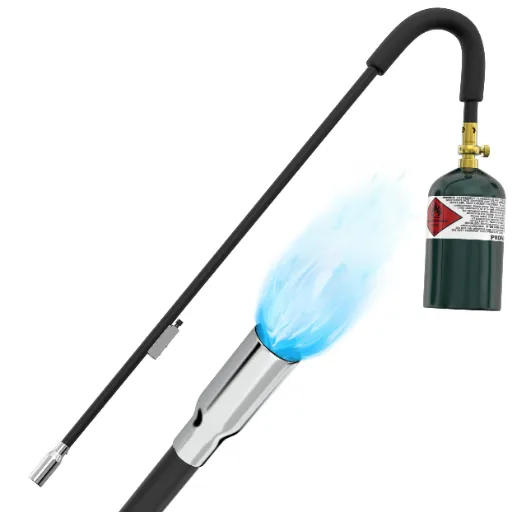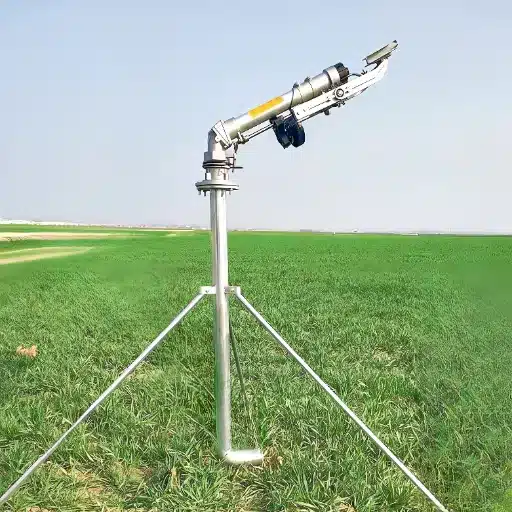For years, the Zamboni has been a mascot of ice sports and skating rinks worldwide, representing a marriage between invention and utility. But have you ever pondered over what makes it so vital and awe-inspiring? Rendering the ice flat with a few gentle sweeps is only half the job of a Zamboni; it revolutionized the maintenance of skating rinks so that athletes and enthusiasts alike could enjoy the best possible conditions. This article goes far beyond an explanation of the science behind the operation. It delves into the history and charm of the Zamboni, exploring how it grew to fill a niche and became part of the arena. So, ready yourself to discover why this ultimate ice resurfacing machine remains a source of admiration and inspiration!
What is a Zamboni and How Does It Work?

Zamboni is a machine used to maintain the ice surface of skating rinks. It accomplishes this by shaving off a thin layer of ice using a sharp blade and collecting the shaved ice in a storage tank. It then washes off debris and fills in scratches or grooves with wash water. A layer of clean water is applied last, quickly freezing, forming a perfect surface. Zamboni does all these processes effectively in one run, making it an indispensable tool in caring for good-quality ice around the globe.
Who Invented the Zamboni?
The American entrepreneur and inventor Frank J. Zamboni developed the ice resurfacing machine. Zamboni was born on January 16, 1901, in Eureka, Utah. He obtained an engineering degree; therefore, he had different fields of expertise: electrical and refrigeration. He was co-owner of a small ice-making plant in Southern California, which he converted into an ice rink business that came to be known as Iceland Skating Rink. In search of an answer to the problem of keeping ice smooth and even, Zamboni began developing his revolutionary machine.
The prototype of the Zamboni, Model A, was completed in 1949. The revolutionary design used parts from different vehicles, including the rear end of a Jeep and the chassis of a Dodge truck. Over the years, Zamboni also worked on perfecting the machine, Model B, and onward to make it even more efficient and easy to handle. The invention quickly became famous and was, by the 1950s, being used in almost all of the important ice arenas in North America.
Today, machines are still manufactured by the Zamboni Company in Paramount, California, numbering in the thousands and used worldwide. Recent figures say over 10,000 Zambonis have been sold since their inception, making it an internationally recognized brand synonymous with ice resurfacing. Because of his contributions to sports and recreation, Frank Zamboni was inducted into the U.S. Hockey Hall of Fame in 2009, forever immortalizing him as the father of ice maintenance technology.
How Does a Zamboni Resurfacing Machine Function?
A series of complex systems work in unison in Zamboni machinery to clean, shave, and resurface the ice to become an enjoyable surface for hockey, figure skating, and other activities. Five key functions describing the operation of the machine are given below:
- Ice Shaving
This machine has a sharp blade that shaves a very thin layer of ice from the surface. It ensures that one is playing on a level field, free of scratches and dents that can spoil the surface for a while.
- Snow Collection
As the ice is shaved away, the horizontal auger collects the ice shavings, better known as the snow, and delivers them to the vertical conveyor. These conveyors then deposit the snow into the storage tank on board, out of the way.
- Water Application
The best ice cleaning is followed by a wash water system, which sprays water over the ice after the shaving. Cleaning loosens the debris and dirt on the surface before the last resurfacing.
- Hot Water Flooding
A thin layer of hot water is flooded evenly onto the ice. This water fills any remaining cracks, scratches, and bonds with the existing ice to present a perfectly smooth surface on freezing.
- Snow Dumping
When finished, the storage tank for “snow” deposits from the Zamboni may be emptied. The operators discharge the “snow” into designated areas, clearing the machine for subsequent use.
Each front function cooperates to pull together the working parts that convert a broken ice sheet into a perfect one, rendering it an ideal platform for skating and safety for the skaters.
What are the Key Parts of a Zamboni?
|
Key Part |
Description |
|---|---|
|
Conditioner |
Shaves and smooths the ice surface. |
|
Blade |
Cuts the top layer of ice. |
|
Augers |
Transports shaved ice to the snow tank. |
|
Snow Tank |
Stores collected ice shavings. |
|
Wash Water System |
Cleans debris from the ice surface. |
|
Water Tank |
Holds water for resurfacing. |
|
Towel |
Spreads water evenly on the ice. |
|
Board Brush |
Cleans ice along rink edges. |
|
Hydraulic System |
Powers various machine functions. |
|
Engine |
Provides propulsion and operational power. |
Why is Ice Resurfacing Important for Hockey?

Ice resurfacing for hockey is very important because smooth and consistent surfaces are much appreciated for the speed and accuracy involved in the game. Rough ice or uneven surface contributes to irregular puck movement, affects players’ performance, and creates dangerous chances for injuries. Resurfacing washes away imperfections such as ruts, chips, and built-up snow that would create an unsafe and non-competitive playful environment. Players are encouraged to reach an utmost level of performance, while a well-maintained ice surface leads to a smooth game flow.
How Does Ice Resurfacing Affect Hockey Performance?
Ice resurfacing improves hockey performance by ensuring a smooth and uniform surface that facilitates the puck’s desired movement, the players’ agility, and the game’s quality.
What is the Role of the Zamboni Machine in Maintaining a Smooth Ice Surface?
|
Key Role |
Description |
|---|---|
|
Shaves Ice Layer |
Removes the rough, top ice layer for smoothness. |
|
Collects Ice Shavings |
Gathers removed ice, storing it in the snow tank. |
|
Washes Ice Surface |
Cleans debris and fills grooves with water. |
|
Applies Water Layer |
Lays clean, hot water to fill imperfections. |
|
Spread an Even Layer |
Ensures water spreads uniformly across the ice. |
|
Smooths Surface |
Towels polish the water layer for a sleek finish. |
|
Levels Ice |
Corrects uneven ice using precision control tools. |
|
Maintains Edge Cleanliness |
Cleans rink edges with board brush mechanism. |
|
Enhances Ice Bonding |
Uses hot water for better freezing and durability. |
|
Improves Play Quality |
Creates an optimal surface for skating and gameplay. |
Exploring Different Zamboni Models and Their Features

From ice resurfacing, Zamboni supplies numerous models with features to aid performance depending on the job.
- Model 100: Lightweight and reliable, it is better suited for smaller rinks and offers excellent handling and ice resurfacing.
- Model 450: This model is best for medium to large arenas because of its power and durability, and it produces very good ice quality.
- Electric Models: (For example, model 552AC): These machines eliminate emissions, keeping the environment clean without compromising performance, so facilities that are environmentally conscious are proper zones.
Each model is meant to produce a fine, evenly surfaced sheet of ice suited to the specific demands of the job.
What are the Different Zamboni Models Available?
|
Zamboni Model |
Key Features |
|---|---|
|
Model 446 |
Fuel-efficient, compact, propane-powered. |
|
Model 526 |
Dual fuel, high snow compaction efficiency. |
|
Model 650 Electric |
Electric-powered, extended battery options. |
|
Model 200 Tractor |
Attachable to tractors, efficient resurfacing. |
|
Olympia Models |
Competitive features, alternative brand offering. |
|
Custom Zambonis |
Tailorable designs for specific arena needs. |
What Features Distinguish a Zamboni Ice Resurfacing Machine?
I would emphasize reliability, efficiency, and innovation while assessing an ideal selling point for Zamboni ice resurfacing machines. The durable components with which these machines are built guarantee a long life; meanwhile, their high-level technology accomplishes precise resurfacing that maintains optimal ice quality. By contrast, electric models offer a good environmental profile, low emissions, and maintenance-free operation. The simplicity of operation and consistency of results have earned the Zamboni name the trust of this circle.
How to Choose the Right Zamboni for Your Ice Rink?
Choosing the best Zamboni for your ice rink involves several questions to be answered, and these will depend on your specific needs. Below are five main areas to consider:
- Rink Size and Usage
The size of the rink is primarily associated with the choice of a Zamboni model: the larger and more professional the rink, the higher the model’s ice resurfacing capacity should be. Compact-model machines are likely to be chosen for smaller community rinks for ease of maneuvering and maintenance.
- Power Source
Will you opt for a gasoline-powered, propane-powered, or electric Zamboni? Electric machines are becoming popular because they are environmentally friendly, low on emissions, and quiet, which makes them suitable for indoor rinks. Gasoline or propane-powered machines might be suitable for facilities operating outdoor rinks.
- Budget and Maintenance Costs
While the initial cost should be considered when buying one, the long-term maintenance, energy, and operating costs are always most important. Electric types generally take less money but may require a heavy initial investment. Use that to craft a balance between the amount you have and the long-term savings.
- Frequency of Usage
Rinks are commonly used for events, leagues, or public skating, making durability and efficiency important factors to consider. Larger Zamboni machines, meant for heavy-duty use, will keep up with the demands for constant resurfacing, while lighter models will be okay with the occasional use.
- Additional Features
Novel Zamboni models offer myriad special features, such as automated water management, rapid blade adjustment, and ergonomic controls. Assess which highly technical features suit your ice rink and its staff’s preferences to ease use and make operations more efficient.
Being well-versed in these aspects will ensure that the Zamboni you choose will be the best fit for your ice rink’s specific needs in terms of efficiency, reliability, and ice quality.
Maintenance Tips for Your Zamboni Ice Resurfacer

- Inspect and Replace Blades
Periodically check the blades for wear and replace them if necessary to resurface the ice smoothly and evenly.
- Inspect Water Systems
Ensure wash water and flood water tanks remain clean and free of angular debris so the ice can maintain the highest quality standards.
- Look into Hydraulic Levels
Check the levels of hydraulic fluid, refilling if possible, for smooth operation of the machine.
- Keep Them Lubricated
Lubrication should be applied to all moving parts, like bearings and chains, to minimize wear and prevent mechanical failure.
- Examine Tires and Treads for Condition
Check tire pressures and tread conditions for proper traction on the ice and to avoid damage to the rink surface.
- Clean the Machine Upon Completion
Each time after use, wash off the Zamboni with ice shavings and debris to prevent build-up that would hamper its functioning.
By following this maintenance schedule, you can extend the life of your Zamboni ice resurfacer while ensuring consistent surface quality.*
How to Keep Your Zamboni in Top Condition?
Maintain your Zamboni regularly, ensuring that oil changes and blade sharpening are carried out along with site inspection of all critical parts for its best working condition and durability.
What are common issues with Zambonis, and how can they be fixed?
|
Common Issue |
How to Fix |
|---|---|
|
Blunt Ice Blade |
Sharpen or replace with a new blade. |
|
Snow Tank Overflow |
Empty the tank regularly to prevent overfill. |
|
Uneven Ice Surface |
Adjust blade height or use the leveling system. |
|
Hydraulic Failure |
Check fluid levels and inspect for leaks. |
|
Water System Clogs |
Clean hoses and replace damaged nozzles. |
|
Engine Overheating |
Check coolant levels and fan functionality. |
|
Electrical Malfunction |
Test and replace faulty wiring or batteries. |
|
Poor Edge Cleaning |
Inspect and adjust the board brush assembly. |
|
Auger Jammed |
Clear blockages and inspect auger motors. |
|
Slow Operation |
Check the transmission and inspect the drive system. |
The Legacy of Frank Zamboni and the Impact of His Invention

Invented by Frank Zamboni, the ice resurfacer revolutionized the maintenance of ice rinks and changed the sport of ice skating. Before his creation, ice resurfacing was a very time-consuming task that involved many workers and pieces of equipment. The single Zamboni machine performed ice resurfacing by scraping, collecting, and reshaping the ice surface. This innovation introduced better ice surfaces and gave the skaters and the audience more pleasure. Zamboni, which stands for ice resurfacing today, ensures that Frank Zamboni’s ingenious creation remains a household name in recreational and professional ice sports worldwide.
How Did Frank Zamboni Revolutionize Ice Resurfacing?
| Key Contribution | Description |
|---|---|
|
Invented Ice Resurfacer |
Created a machine for efficient ice resurfacing. |
|
Integrated Functions |
Combined shaving, washing, and smoothing ice processes. |
|
Reduced Resurfacing Time |
Streamlined a process requiring multiple workers. |
|
Introduced the Auger System |
Efficiently transported ice shavings to the snow tank. |
|
Patented Design |
Secured rights to his revolutionary machine in 1953. |
|
Enhanced Ice Quality |
Achieved smoother, safer, and more durable ice. |
|
Innovated with Hot Water |
Improved ice bonding and clarity using heated water. |
|
Created Industry Standard |
Established principles adopted by ice resurfacers today. |
|
Advocated Automation |
Simplified resurfacing with hydraulics and automation. |
|
Global Impact |
Revolutionized ice sports and rink maintenance worldwide. |
Why is Frank Zamboni an Important Figure in Hockey?
The contribution of Frank Zamboni to hockey is immense, as his invention of the ice resurfacing machine redefined rink maintenance. The following are the five fundamental reasons why Frank Zamboni is considered necessary to hockey:
- Revolutionized Ice Surface Quality
Before the Zamboni, preparing the ice was laborious and time-consuming. It took minutes to finish ice resurfacing perfectly, presenting the players and spectators with a wonderful view during the game.
- Improved Game Efficiency
Likewise, the use of Zamboni machines kept the ice preparation time at a minimum during games. It enhanced smooth transitions between periods and allowed for minimal interruptions during hockey arrangements and events.
- Making Hockey More Accessible
In addition to making ice resurfacing easier, this phenomenon led to the construction and maintenance of many more ice rinks worldwide. This set the stage for the growth of hockey as a sport and made it accessible in communities across the globe.
- Set a Global Standard
The Zamboni machines are the gold standard for ice resurfacing, from local hockey leagues to world championships. Their dependability and efficiency have made them the benchmark of rink management worldwide.
- Cultural and Iconic Presence
Being a cultural icon intertwined with the image of ice hockey, fans highly anticipate Zamboni’s making. It has come to represent both the history and innovation of the sport.
References
-
Lynah Rink: The Science of the Ice – Discusses the role of Zamboni machines in maintaining ice quality.
-
Greywater Implementation in Montgomery County – Explores the process of ice shaving and its environmental implications.
-
American Indians protest athletic mascots – Includes a mention of Zamboni machines and their historical significance.
Frequently Asked Questions (FAQ)
Q: What is a Zamboni, and why is it essential in ice resurfacing?
A: A Zamboni is an ice rink resurfacing machine invented by Frank Zamboni in 1949. It plays a crucial role in maintaining the ice by shaving the surface, removing ice shavings, and applying a thin layer of fresh ice to ensure a smooth skating experience.
Q: How did Frank Zamboni develop the idea for the Zamboni machine?
A: Frank Zamboni, originally part of the block ice industry, invented the Zamboni in 1949 to efficiently address the need for a machine to resurface the ice in indoor ice rinks. His motivation stemmed from his desire to improve the ice quality for skaters.
Q: How does a Zamboni work to resurface the ice?
A: The Zamboni works by shaving off the top layer of ice, collecting ice shavings, and then applying a thin layer of warm water. This process smooths out the ice and leaves a fresh, even surface for skaters.
Q: What components of a Zamboni are crucial for its operation?
A: Key components include the blade for shaving the ice, the augers that collect ice shavings, the water tank for distributing warm water, and the edgers for smoothing out grooves along the ice’s edge.
Q: How has the Zamboni evolved since its invention by Frank Zamboni?
A: Since Frank Zamboni invented it in 1949, the Zamboni has evolved with technological advances, including improvements in power efficiency, refrigeration systems, and more precise ice resurfacing capabilities.
Q: Why is maintaining the ice important in an arena setting?
A: Maintaining the ice is crucial in an arena to ensure skaters’ safety and performance. A well-maintained surface prevents accidents and enhances the skater’s experience by providing smooth ice free of grooves and imperfections.
Q: What role did the Zamboni brothers play in developing the Zamboni machine?
A: The Zamboni brothers were instrumental in developing the Zamboni machine. Working alongside Frank Zamboni, they refined its design and functionality, ultimately leading to the successful launch of the first Zamboni ice resurfacer.
Q: How does the Zamboni contribute to the overall experience at an ice rink?
A: The Zamboni enhances the overall experience at an ice rink by ensuring that the ice surface is consistently smooth and safe for skating. This contributes to skaters’ enjoyment and performance levels, whether they are professionals or recreational users.
Q: What makes the Zamboni different from other ice resurfacers?
A: The Zamboni is distinguished from other ice resurfacers by its innovative design and efficiency, which revolutionized the process of ice rink resurfacing. Its ability to shave, collect, and resurface in one continuous action set a new standard in the industry.









